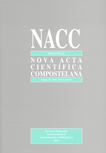Aspergillus fumigatus: a mere airborne particle or a powerful biohazard?
Contido principal do artigo
Resumo
Aspergillus fumigatus conidia constitute a common and widespread bioparticle of the air spectra. However, despite being innocuous to the majority of the healthy population, in immunocompromised patients, these bioparticles can cause a wide range of complaints ranging from mild allergenic reactions to severe disseminated diseases. One of the most devastating of Aspergillus-related diseases is invasive aspergillosis (IA) and despite all efforts, the morbidity and mortality remain unacceptably high. The poor outcomes of IA treatment are frequently associated with host status, delay of early diagnosis, and lack of adequate antifungal therapy, namely due to the resistance to azole therapy.
The present work covers aspects of A. fumigatus biology and its role in allergy outset and in the development of invasive aspergillosis (IA). Additionally, topics of IA diagnosis and therapeutic approach are also reviewed while cell death is explored as a possible mechanism to the development of new therapeutical approaches.Palabras chave
Detalles do artigo
Artigos máis lidos do mesmo autor/a(s)
- Manuela Oliveira, Maria Isabel Amorim, Luísa Azevedo, Authentication of plant food products: Under the magnification of Botany Forensics , Nova Acta Científica Compostelana: Vol 24 (2017)


